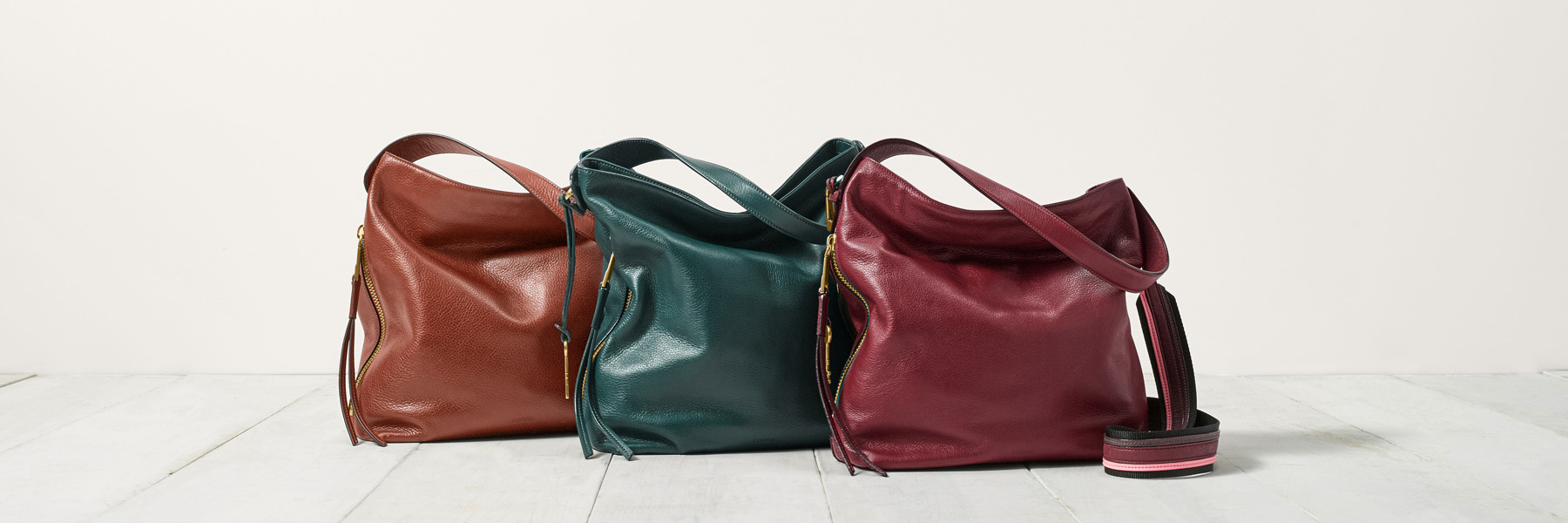When you feel the glazed pebbled leather of the Maya hobo or admire the Garrett bifold wallet’s softness and patina, you’re getting a firsthand look at our future. By 2025, we at Fossil Group are aiming for more than half of our global product assortment to include sustainable design elements. To achieve this ambitious goal, we’re starting with the one material that’s found in so many of our products: leather.
Origin Story
The traceability of our leather and how it’s manufactured matters. As part of the Sustainable Leather Sourcing Project, we’re making a global effort to source our leathers from environmentally preferred suppliers. Thanks to our partnership with tanneries who work with The Leather Working Group (LWG), a global organization that assesses environmental compliance and promotes sustainable practices in the leather industry, we’re currently at 80 percent.
“We want to source leather from LWG-audited members because it means we’re sourcing from tanneries who are following the appropriate environmental factors, such as where [the leather] is coming from, the amount of water and chemicals used, and how it’s disposed of,” says Whitney Josey, Fossil’s director of sustainability and supply chain.
LWG-rated tanneries undergo a bi-annual audit of their facilities to ensure they meet the group’s environmental requirements. According to the LWG, a rating of gold, silver, bronze or audited (a leather manufacturer that has gone through the audit process, but has not achieved a high enough score to be medal-rated) is awarded to tanneries depending upon their score during the auditing process.
A STEP IN THE RIGHT DIRECTION
Today, several of our products are crafted from environmentally preferred leather, including bags, such as the small Fiona crossbody and Estate backpack, wallets such as the Jerome bifold and the mini-tab, gifts and watch straps. And that number should only continue to grow. “The biggest challenge has been encouraging tanneries to spend the money,” says Kristy Sam, director of materials development. “As membership is getting more popular and big customers tighten their sustainability and sourcing requirements membership could become more common.” For Fossil Group, any new suppliers going forward will need to have LWG certification.
Opting to use only environmentally preferred leather was a great place to start, and Josey is confident we’ll continue to make even more sustainable strides within our business. “Making sure our leather is from a sustainable resource helps us get to that 2025 [Design For The Future] goal quicker” she explains. “We are also going to ensure that we’re using sustainable practices and components within our watch category. But this is a huge step in the right direction.”
To learn more about how Fossil Group makes time for good, including the Design For The Future commitment, visit fossilgroup.com/sustainability.

